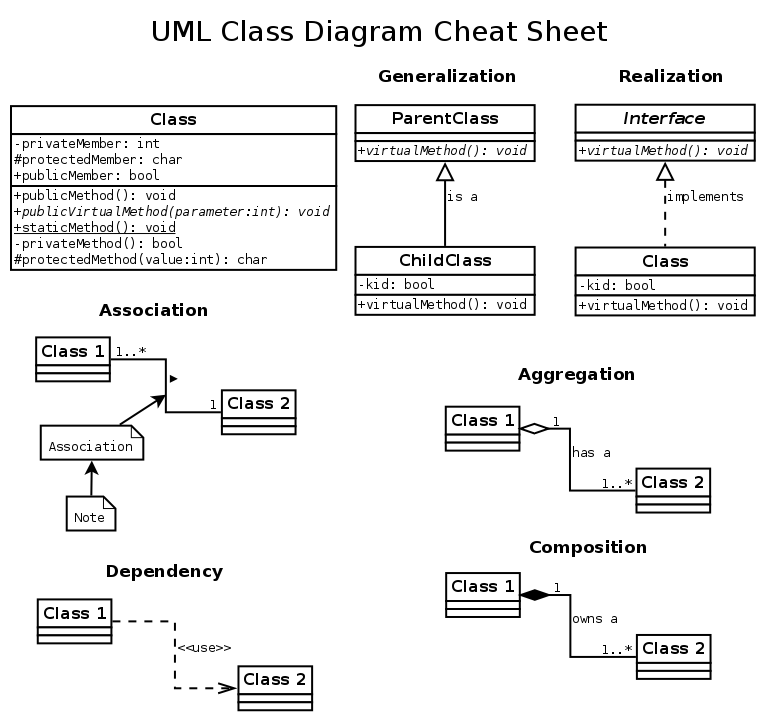The UML Class Diagram
The class diagram is a very important part of UML. It’s a structure diagram and it’s purpose is to display classes in the system with all the relationships between them. In my opinion it’s the most popular type of diagram in software development.
Drawing class diagram of your design really helps to see the problem in broader terms. By writing it down you free space in your head for new ideas :-). It is also easier to understand by others when you want to discuss the problem with someone else. The thing is, I often find myself wondering about the syntax when I read someone else’s diagrams. That’s why I decided to make a little cheat sheet here to remind me.
Class
Kind of a key component in a class diagram. Classes will be shown as nodes and usually as boxes. Here is a example of one. Each class can have methods and attributes defined. The convention is shown on Figure 1.
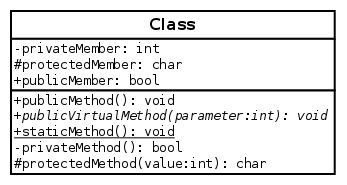
Inheritance
Class inheritance is in terms of UML a relationship of generalization. It represents “is a” relationship on class level. Figure 2 shows how to portray generalization.

Realization
UML has different relationship for interfaces. When you inherit from an interface you implement it, which is in terms of UML a relationship of realization. It’s visual appearance is similar to inheritance, but the line is dashed. Also the interface class should be marked as abstract (have name written in italic). See on Figure 3.
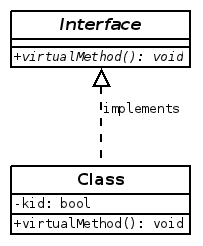
Association
Another form of relationship in class diagram is association. It’s a object-level relationship (i.e. happens between objects of associated classes). So the whole relationship represents a family of links. There are multiple types of association with stronger policies (composition and aggregation).
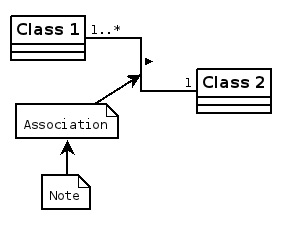
Aggregation
Aggregation is a stronger and more specific form of association. It’s “has a” relationship. Graphical representation of aggregation is shown on Figure 5.
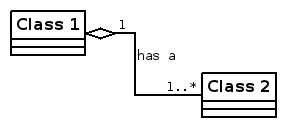
### Composition
Even stronger form of aggregation is composition. Instead of “has a” it represents “owns a”. It’s suited for relationship when one object_ can only exist_ as a part of another. For example if a plane has a wing it’s a composition. What would you do with a wing alone, right? The plane owns it. But when a pond has some ducks in it it’s an aggregation. The ducks will survive without a pond (only probably not that happy). And a pond will still be a pond with or without ducks. Graphical representation of composition is virtually the same as aggregation, only the diamond is filled (see on Figure 6).

Dependency
Last type of relationship is a dependency. It’s weaker then association and it says, that a class uses another one and therefore is dependant on it. The use of dependency is appropriate for example in cases where an instance of a class is stored as a local variable inside another classes’ method. Or some static methods are used, so the classes are not associated, but one depends on the other.

Cheat Sheet
I did all the examples in an open-source diagram editor called Dia. I recommend it by the way. And because it’s such a wonderful editor, here’s a complete cheat sheet (if you’d like to print it).
